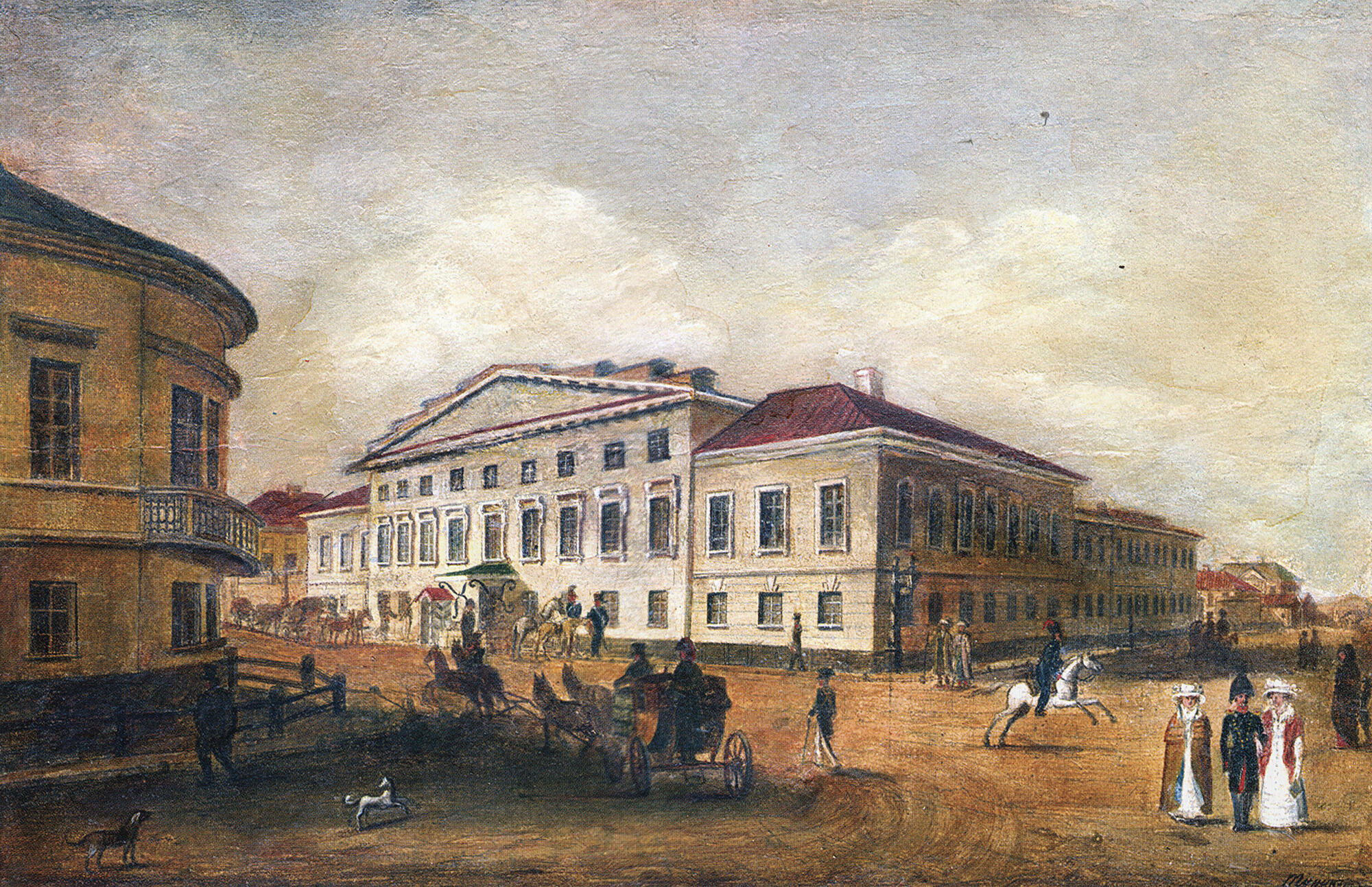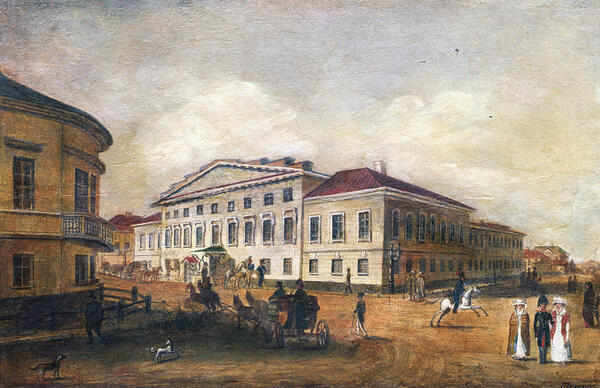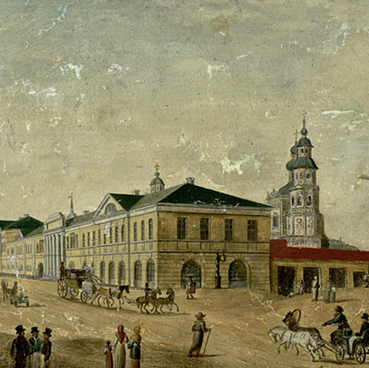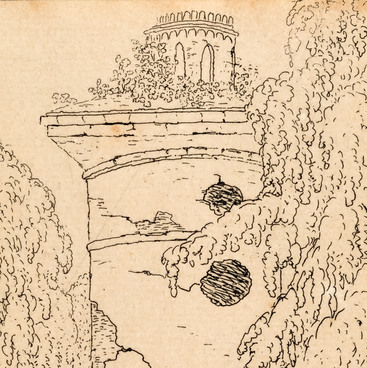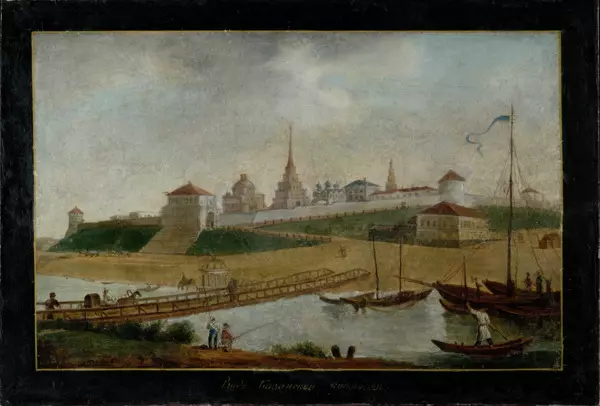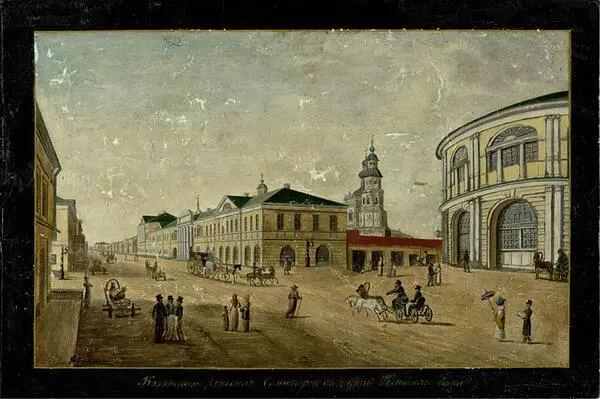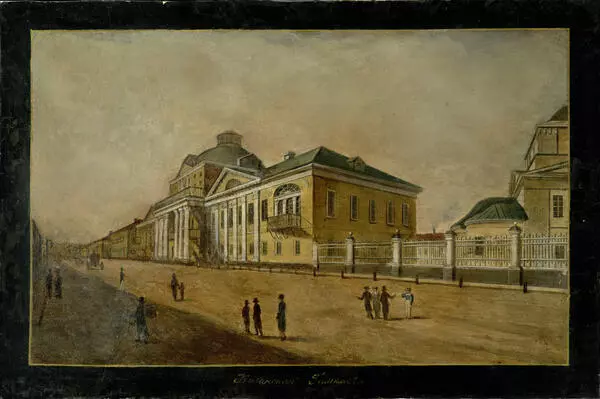Vasily Turin was one of the first artists who inaugurated artistic education in Kazan. For more than twenty years, from 1810 to 1830, he taught drawing at the Kazan People’s School. Many of his students continued their studies at the Academy of Arts.
The calligraphic etching from the National Museum of the Republic of Tatarstan depicts a house built in 1825 for the vice-governor of Kazan. Subsequently, the house was bought for the accommodation of the military governor, and one of the military governors of the time was Irakly Boratynskiy, the brother of the poet Evgeniy Boratynskiy.
In 1815, Turin founded a private Drawing School in Kazan, which existed until 1834. At the same time, Turin was engaged in icon painting and calligraphic etching. Having studied Kazan and Kazan people well, he made a number of drafts, sketches and studies dedicated to Kazan.
The most known of his albums is the album of eight lithographs “Perspective views of Kazan, the principal city of the governorate, drawn from nature, lithographed and published by Vasily Turin”. It was printed in Moscow in 1834. The album attracted a lot of interest and in the early 20th century became a bibliographical rarity. For many years Turin studied the peculiarities of the architecture and everyday life of Kazan, which allowed him to create a truly monumental work, describing the design of the city and its customs.
At the same time, in Kazan Turin was known for many years primarily as a master of church painting - the artist was engaged in icon painting and temple murals. He also enjoyed success in calligraphic etching. Turin desired authenticity, clarity and simplicity. Turin was characterized by the desire for authenticity, clarity and simplicity, “the charm of naivety and that special beauty of thoroughness”, as the art critic Alexander Benoit wrote. His graphic arts bring us back to an age when people were fascinated by the city views and their special charms.
The most known of his albums is the album of eight lithographs “Perspective views of Kazan, the principal city of the governorate, drawn from nature, lithographed and published by Vasily Turin”. It was printed in Moscow in 1834. The album attracted a lot of interest and in the early 20th century became a bibliographical rarity. For many years Turin studied the peculiarities of the architecture and everyday life of Kazan, which allowed him to create a truly monumental work, describing the design of the city and its customs.
At the same time, in Kazan Turin was known for many years primarily as a master of church painting - the artist was engaged in icon painting and temple murals. He also enjoyed success in calligraphic etching. Turin desired authenticity, clarity and simplicity. Turin was characterized by the desire for authenticity, clarity and simplicity, “the charm of naivety and that special beauty of thoroughness”, as the art critic Alexander Benoit wrote. His graphic arts bring us back to an age when people were fascinated by the city views and their special charms.
The calligraphic etching from the National Museum of the Republic of Tatarstan depicts a house built in 1825 for the vice-governor of Kazan. Subsequently, the house was bought for the accommodation of the military governor, and one of the military governors of the time was Irakly Boratynskiy, the brother of the poet Evgeniy Boratynskiy.
In this house in August 1837, Decembrists Lorer, Odoyevsky, Naryshkin, Rosen, Nazimov, Likharev, Fokht spend the night on their way from the place of exile in Siberia to the Caucasus. In 1872-1874, the house was rebuilt as the premises of the Kazan District Court and the Chamber of appeals. The famous lawyer of the beginning of the 20th century Anatoly Kony worked here.
